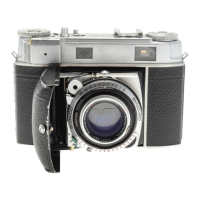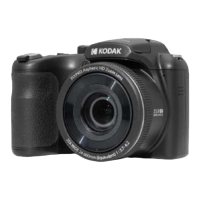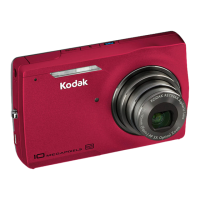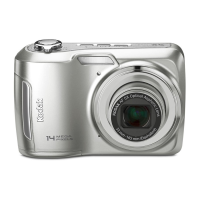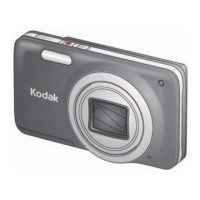Agfacolor CT18 Daylight 50 M
Agfacolor CK20 Artificial light 80 M
Anscochrome 50 Daylight 50 M
Anscochrome T100 Artificial light 100 M
Anscochrome 100 Daylight 100 M
Anscochrome 200 Artificial light 200 M
Ektachrome E2 Daylight 32 U
Ektachrome X Daylight 64 U
H.S. Ektachrome Daylight 160 U
H.S Ektachrome B Artificial light 125 U
Ferraniacolor Daylight 25 U
Ferraniacolor Artificial light 20 U
Ferraniacolor Dia 28 Daylight 50 M
Fujicolor Daylight 10 M
Gevacolor R5 Daylight 40 M
Ilford Colorslide Daylight 32 M
Ilford Super Colorslide Daylight 64 M
Kodachrome II Daylight 25 M
Kodachrome IIA Artificial light 40 M
Kodachrome X Daylight 64 M
Konicolor Daylight 16 M
Perutz Color C18 Daylight 50 M
Telcolor Daylight 50 M
PROCESSING: M = films can be processed only by the maker; L = films can be
processed only by an approved laboratory through a photographic dealer: U =
films can be processed by the user by means of special processing kits.
DISPLAYING THE COLOUR PICTURE. The colour transparency can be viewed in a variety of transparency viewers.
The simplest consist of a magnifying glass set in a frame into which the picture can be inserted. If the viewer is held
against a lighted background, the picture appears enlarged and well illuminated. More elaborate viewers have an
artificial light source of their own.
The most satisfactory way is to project the transparency in a projector which will throw a large picture on a screen.
Finally colour enlargements can be made from transparencies. These cannot show the full tonal range and brilliancy
of the projected picture, but are generally acceptable, particularly if the transparency does not show undue contrast
range, is correctly exposed and is sharp.
The colour negative can be printed or enlarged directly on colour paper to produce a colour print of any size.
Alternatively, the colour negatives can be printed on positive transparency film to produce colour transparencies for
viewing or projection in exactly the same way as explained above.
The Technique of Focus
The lens is focused at some definite distance. That means that its position relative to the film Is adjusted In such a
way that whatever is exactly at the focused distance will be represented by a "sharp" image on the film. Everything
else -- everything nearer to the camera or farther from it -- will be, strictly speaking, "unsharp".
In practice the decline of definition is, of course, gradual. Thus there is a zone -- stretching from somewhere in front
of the focused distance to somewhere behind it -- which will appear sufficiently sharp to the human eye. This is
called depth of field.
Now, what should or should not be accepted as sufficiently sharp is debatable. Certain standards, however, have
been agreed upon. It is agreed that any pin-point represented on a 35 mm. negative by a "dot", the diameter of
which does not exceed 1/500 in. or 1/20 mm., should be regarded as sharp. The technical term for this is circle of
confusion.
The limits defined by the circle of confusion vary with the conditions under which the lens is used:
Small apertures yield more depth of field than large ones.
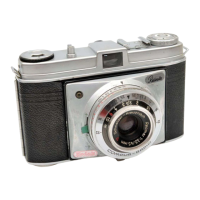
